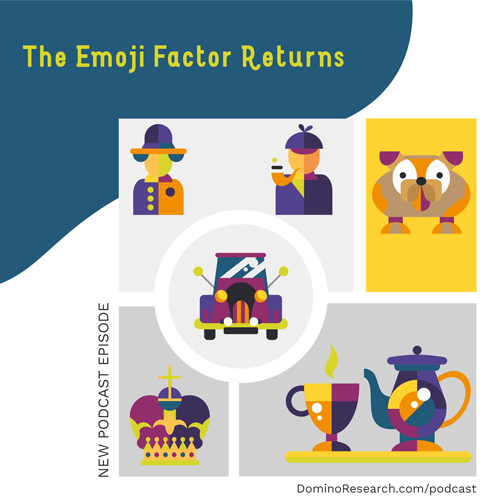
Emojis are nothing new.
But there are some new emojis, and maybe you haven’t yet heard of Emoji Kitchen or emoji mashups? We’re back with another episode of the podcast and today we are talking about the emergence of emojis (boy, that’s a mouthful) and the how and why of how they come to be on your phones, in your posts, and how new ones are created.
[LISTEN: Mobile Reach: #distancemarketing in a new era – PODCAST EPISODE]
It turns out that emojis aren’t just something you can whip up at the drop of a hat; not if you want them to be universally accepted and used by millions of people. There’s an actual governing body that manages the emoji universe, and decides which ones will make it into the land of unicode and which ones are not going to be default. Who knew?
What’s the point of using an emoji instead of an abbreviation?
Well, that depends on a few factors like how old you are, what kind of device or platform you are using, and what you are trying to express. There are plenty of “alternate” definitions for some common glyphs, and some of them are downright NSFW.
The basic premise behind these little characters is that it’s a way of expressing a larger sentiment by using a single image to make a point or enhance something you are trying to say. And in the current situation, it’s no wonder they are becoming more popular; after all, who doesn’t need a smile to brighten their day right now?
If you don’t know that much about the topic, or you aren’t entirely sure how to use them in context, this is definitely the podcast episode that you want to listen to today. (Seriously, you are stuck at home doing shelter in place, what in the world else do you have today?)
Do you know your emoji history?
Those little digital icons conveying laughter, love, or even a steaming pile of you-know-what, have become an undeniable part of our digital communication. But their history goes beyond just the age of smartphones and social media. It’s a story that stretches back decades, with roots in both technological limitations and the human desire to add emotional nuance to text-based interactions.
The early ancestors of emojis can be traced back to the 1960s. In 1963, Harvey Ball created the now-iconic smiley face – a simple yellow circle with two dots for eyes and a curved line for a smile. This design, originally intended to boost morale at an insurance company, became a symbol of positivity and lightheartedness.
Fast forward to the late 1980s and early 1990s, the rise of digital communication like chatrooms brought about the birth of emoticons – combinations of punctuation marks and letters used to express emotions. A colon followed by a parenthesis for a smile (:)), a semicolon for a wink (;)), or a combination of characters to depict sadness or frustration – these emoticons served as a way to add a layer of emotional understanding to text-based conversations.
However, emoticons had limitations.
They relied on users interpreting the symbols correctly, and they could be cumbersome to type on early mobile devices with tiny keyboards. This is where the story takes a turn towards Japan. In 1999, Shigetaka Kurita, a designer at the Japanese mobile carrier NTT DoCoMo, created the first set of what we now consider modern emojis. Inspired by Japanese manga comics and pictograms used in weather forecasts, Kurita designed a set of 176 characters that could be easily used on mobile phones and pagers. These were simple, expressive, and perfectly suited for the limitations of the technology.
The introduction of emojis in Japan was a turning point. They quickly gained popularity and spread to other parts of Asia. But it wasn’t until the late 2000s, with the rise of smartphones and global messaging apps, that they truly exploded in popularity. Apple introduced emojis to iPhones in 2011, and other platforms followed suit. The Unicode Consortium, a non-profit organization that sets the standards for how text is encoded and displayed on computers, began standardizing emojis to ensure consistent rendering across different devices and platforms.
So, why do we use emojis?
There are several reasons. Emojis help us bridge the gap in emotional communication that exists in text-based interactions. They allow us to express a wider range of emotions than just words can convey. A simple smiley face can instantly lighten the mood of a message, while a thumbs-up emoji can show approval without needing a full sentence. Check out the Emojipedia here for more meanings and history of emojis.
They can also be used to add humor, sarcasm, or even cultural references to our communication. They can help break the ice in new conversations and make interactions feel more personal. Additionally, emojis can transcend language barriers. A well-placed heart emoji can be understood universally, regardless of the spoken language.
These little figures are more than just cute little icons. They are a reflection of our desire to add richness and nuance to our digital communication. From their early roots in emoticons to their global popularity today, emojis have become an essential part of our digital language, helping us express ourselves more fully and connect with others on a deeper level.

